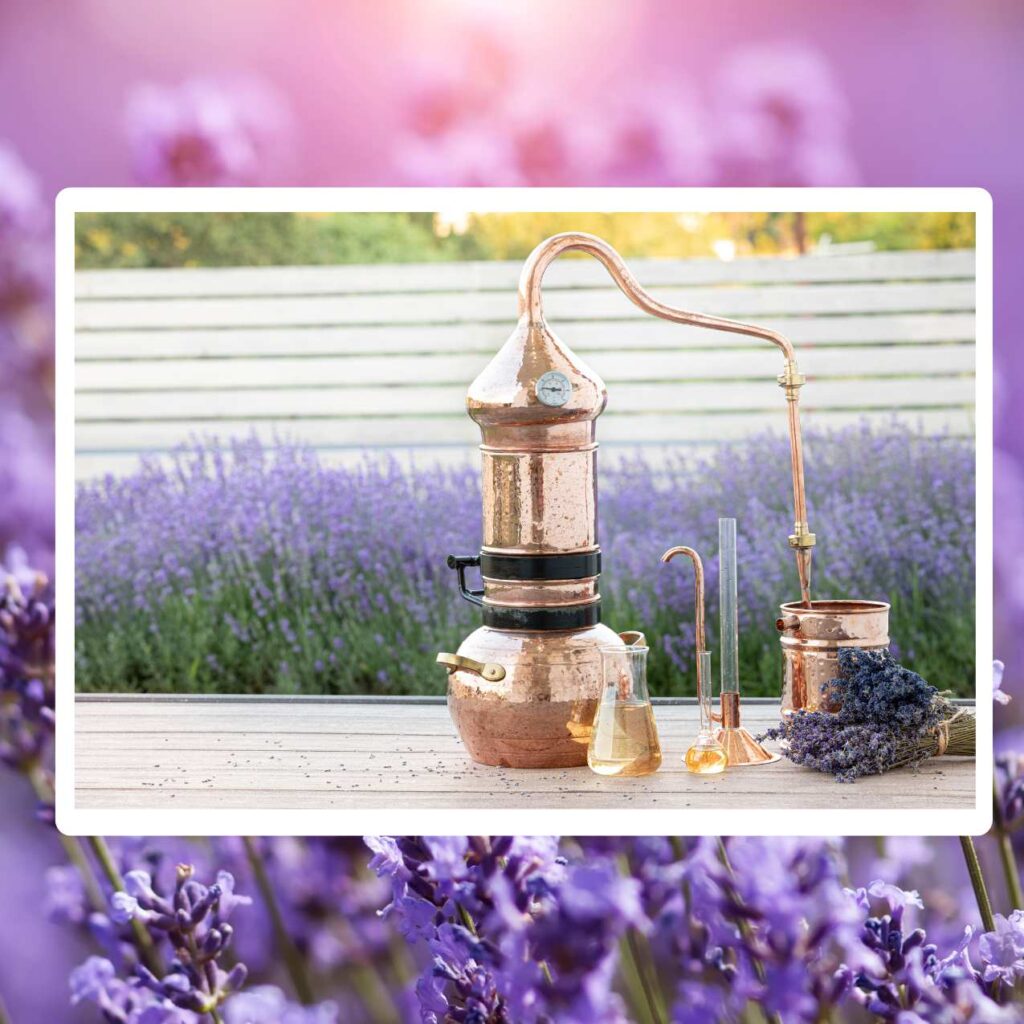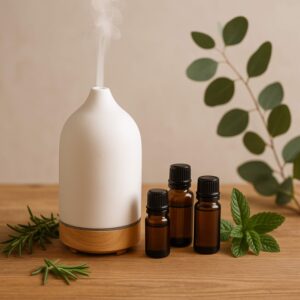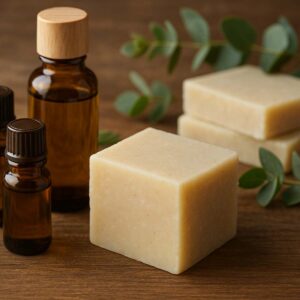How Steam Distillation Works in Essential Oil Production
Why Steam Distillation Matters in Essential Oil Production
Essential oils are the backbone of the natural fragrance, wellness, food, and cosmetic industries. From lavender pillow sprays to eucalyptus cough remedies, these concentrated plant extracts are everywhere. But have you ever wondered how we actually get pure essential oils out of leaves, flowers, bark, or roots?
The answer — in most cases — is steam distillation.
This process has been around for centuries, yet it remains the gold standard for essential oil extraction because it balances purity, efficiency, and cost-effectiveness. Modern perfumers, pharmaceutical companies, and aromatherapy practitioners all rely on steam-distilled oils because this method preserves delicate plant compounds without harsh solvents.
In this article, we’ll walk step by step through how steam distillation works, explain the science behind the process, highlight industries that rely on it, and provide insights on how wholesale buyers can judge quality. By the end, you’ll see why steam distillation has stood the test of time — and why it’s still the method of choice in today’s essential oil trade.
What Is Steam Distillation? A Beginner Friendly Definition
At its core, steam distillation is a method of separating essential oils from plant material using hot steam.
- Plant material (like lavender flowers or peppermint leaves) is placed in a chamber.
- Steam passes through it, rupturing oil glands and releasing volatile aromatic compounds.
- The vapor (steam + oil) rises into a condenser, cools, and turns back into liquid.
- Since oil and water don’t mix, the essential oil separates naturally from the water.
👉 The result is pure essential oil and hydrosol (aromatic water).
Think of it like brewing tea — except instead of drinking the water, we’re capturing the vapor to get a highly concentrated oil.
The Science Behind Steam Distillation: Volatile Oils and Plant Chemistry
Essential oils are volatile compounds, meaning they evaporate easily at relatively low temperatures. If you just boiled them directly in water, the heat might destroy delicate molecules.
Steam distillation solves this problem:
- Steam lowers the boiling point of the oils, so they evaporate without burning.
- Aromatic compounds travel with the steam.
- When cooled, they condense back into liquid, where the oil separates from water.
This makes steam distillation ideal for oils like lavender, eucalyptus, peppermint, rosemary, and clove, which would lose potency if exposed to direct boiling.
Step-by-Step Process of Steam Distillation
Step 1: Preparing the Plant Material
- Fresh or dried plant material is chopped or shredded to maximize surface area.
- Examples: lavender flowers, eucalyptus leaves, citrus peels, peppermint leaves.
- Material is loaded into a distillation still (copper or stainless steel).
Step 2: Introducing Steam
- Steam is generated in a boiler and passed into the still.
- Heat ruptures oil sacs in the plant material.
- Volatile compounds vaporize along with the steam.
Step 3: Condensation
- The steam-oil vapor rises into a condenser (cooled pipes).
- Cold water circulates around the condenser to cool the vapor.
- Vapor turns back into liquid (water + essential oil).
Step 4: Separation
- The liquid flows into a Florentine separator.
- Since oils are lighter than water, they float on top.
- The top layer = essential oil, bottom = hydrosol (lavender water, rose water).
Essential Oils Commonly Produced by Steam Distillation
Not all oils are steam distilled — delicate flowers like jasmine often need solvent extraction. But most staples in the aromatherapy, beauty, and pharmaceutical industries are produced this way:
Lavender Oil – relaxation, stress relief
Eucalyptus Oil – respiratory support
Peppermint Oil – digestive, cooling
Tea Tree Oil – antimicrobial, skin care
Rosemary Oil – circulation, focus
Clove Oil – dental and medicinal use
Advantages of Steam Distillation (vs. Other Methods)
Purity: No chemical solvents remain in the oil.
Preservation: Gentle steam protects delicate compounds.
Scalability: Suitable for small craft distillers and industrial production.
Byproducts: Hydrosols are marketable products (rose water, lavender water).
Compared to cold pressing, steam distillation allows extraction from leaves and roots (not just citrus peels). Compared to solvent extraction, it’s more natural and residue-free.
Limitations and Challenges of Steam Distillation
Energy intensive: Requires continuous steam generation.
Not suitable for all botanicals: Jasmine, tuberose, and delicate flowers degrade under heat.
Yield variability: Quality depends on plant origin, harvest time, and distillation skill.
This is why some oils are instead produced by CO₂ extraction or solvent extraction.
Applications Across Industries
Aromatherapy & Wellness
Lavender for relaxation
Peppermint for clarity
Tea tree for skin healing
Cosmetics & Beauty
Steam-distilled oils in perfumes, creams, serums, and soaps.
Pharmaceuticals & OTC
Eucalyptus in vapor rubs
Peppermint in digestive remedies
Clove in dental gels
Food & Beverages
Mint in chewing gum and candy
Citrus oils in sodas and desserts
Cleaning & Hygiene
Lemon oil in natural cleaners
Pine oil in disinfectants
How Buyers Can Judge Quality of Steam-Distilled Oils
If you’re sourcing wholesale essential oils, here’s how to protect yourself from adulterated or low-grade oils:
GC/MS Testing: Ensures chemical fingerprint matches the genuine plant.
COA (Certificate of Analysis): Confirms purity and constituent levels.
Organic Certification: USDA or equivalent for organic buyers.
Sensory Evaluation: True oils have a natural complexity that synthetics lack.
Traceability: Ask suppliers about origin (India, Madagascar, Morocco, etc.).
Modern Innovations in Steam Distillation
Today’s distillation isn’t limited to traditional stills. Innovations include:
Superheated Steam Distillation – faster process, higher yields.
Hybrid CO₂ + Steam Extraction – combining methods for higher purity.
Energy-efficient systems – recycle heat and steam to lower costs.
Automated controls – monitor temperature, pressure, and yield in real-time.
Frequently Asked Questions About Steam Distillation
Q1: Is steam-distilled oil better than cold-pressed oil?
👉 Depends on the plant. Citrus oils are better cold-pressed, but most herbs, flowers, and roots require steam distillation.
Q2: What’s the difference between essential oil and hydrosol?
👉 Essential oil = pure concentrated oil. Hydrosol = aromatic water (rose water, lavender water).
Q3: Can steam distillation be done at home?
👉 Yes, on a small scale with mini stills — but industrial buyers require lab-tested oils.
Conclusion: Why Steam Distillation Remains the Gold Standard
Steam distillation has been used since ancient times — and remains the most trusted, scalable, and effective method for producing high-quality essential oils today.
For buyers in aromatherapy, cosmetics, food, and pharmaceuticals, it ensures:
Purity (no solvents).
Consistency (standardized oils).
Versatility (usable across industries).
👉 If you’re sourcing bulk essential oils, always ask for steam-distilled, GC/MS-tested oils to ensure you’re getting authentic, high-quality ingredients.
Request a wholesale quote today by contacting us to access premium, steam-distilled oils directly from trusted global sources.




